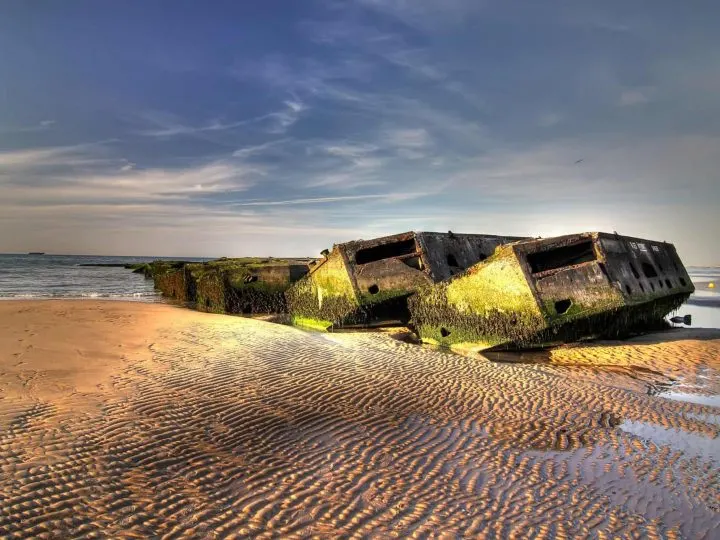Learn How to teach your kids about D-Day While Visiting France.
If one looks at Omaha Beach today, it’s hard to imagine the conflict that took place there on D-Day. But if you linger for a moment, feeling the breeze from the English Channel wash over you, you’ll find that the echoes of history live on. In the serenity of this now peaceful shoreline, the sacrifices of war and liberation reverberate in the air and on the waters that once ran red with the blood of D-Day’s most intensely fought battle. A heavy history never really goes away after all; it becomes part of the landscape on which it unfolded. This is what happened on Normandy’s beaches and surrounding locations. In some cases, even the physicality of the land itself was changed by D-Day.
How to Teach Your Kids about D-Day While Visiting France
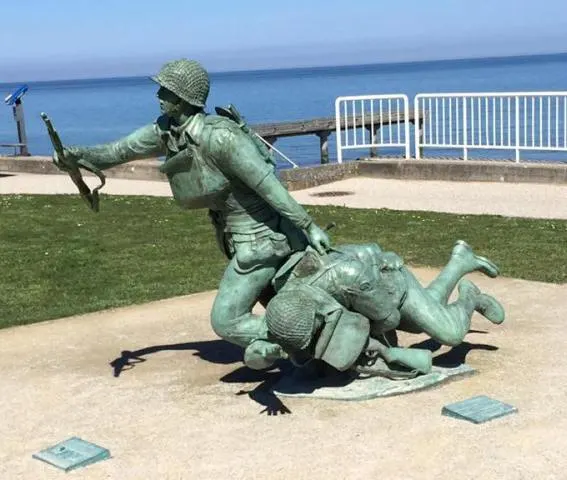 Photo by: Kristine Dworkin
Photo by: Kristine Dworkin
It can be challenging to find a starting point when teaching kids about weighty topics like the sacrifices made by our military. Try not to put all the details in front of them at once. Instead, think of it as a layered conversation you’ll build on as your kids get older. Begin with simple facts: “More than seven decades ago, approximately 150,000 allied soldiers stormed a handful of beaches along Normandy’s coastline. They faced a lot of obstacles and resistance, but they gained a crucial foothold which led to the liberation of Western Europe.” This period also has a lot of powerful themes you can weave into lessons. For instance, is there any better illustration of teamwork than telling kids about how the forces of several countries came together to defeat a shared threat? My own daughter drew a tie to bullying during a discussion about Adolf Hitler and his policies. Given the opportunity and guidance, kids can see how societal principles that were so much a part of this story apply to their daily lives.
Preparing for a Visit
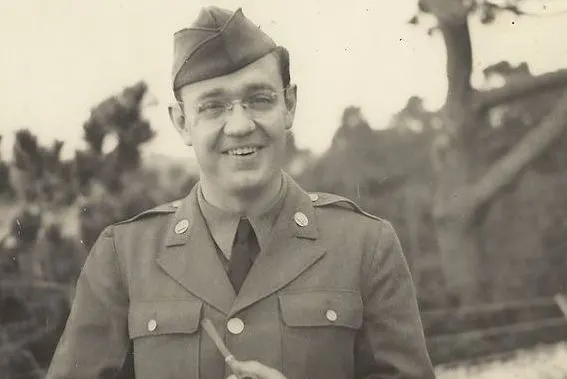 Photo courtesy of: Kristine Dworkin
Photo courtesy of: Kristine Dworkin
My family’s fascination with World War II history started with an army vet. My kids’ great grandfather was stationed in Europe during the war. While he wasn’t part of the D-Day landings he left behind a rich pool of mementos that have been helpful in making this history more personal. A talented history teacher also noticed that spark of interest in my child and turned it into a bright flame. When my daughter began devouring history books and producing elaborate reports for school, my husband and I decided to build on her interest by taking our kids to Normandy.
To make the trip more meaningful, we involved them in the planning. We poured over books, websites, and photos. Together, we watched short documentaries. One thing immediately became clear – with limited travel time and infinite historic sites and monuments to see, we had to make some choices that still allowed our family a good overview. Here are the results:
The Top 5 D-Day Sites from My Family’s Travel Itinerary
Arronmanches Les Bain
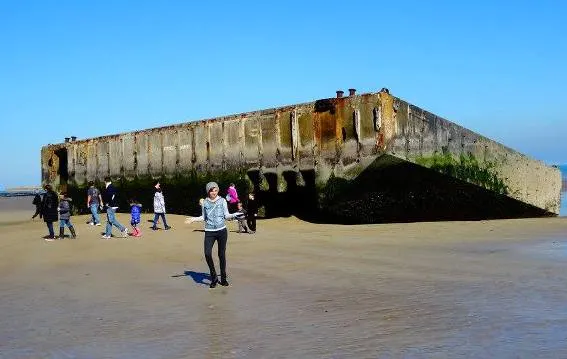 Photo by: Kristine Dworkin
Photo by: Kristine Dworkin
The remnants of Mulberry Harbor can still be seen around the beaches off this tiny community. Developed and installed by the British, this artificial port facilitated the rapid offloading of cargo after D-Day – up to 9,000 tons per day. The Mulberries, comprised of floating roadways and pierheads that went up and down with the tide, are now overgrown with algae and battered by ocean waves making for an interesting visual that is a striking contrast to this immaculate coastline. For an excellent presentation of the crucial role of this harbor and how it was made, visit the Musee du Debarquement. This museum also has many dioramas, models, and artifacts from the events of this period that are useful in helping to make the history accessible to kids. Your kids can even ask earnest questions like one of mine did, “Do you still find stuff from the war on the beach?”
Normandy American Military Cemetery and Memorial
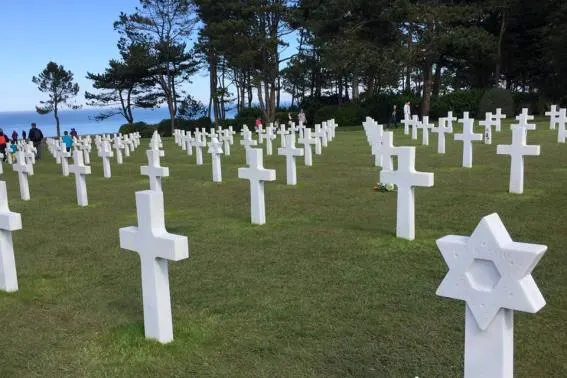 Photo by: Kristine Dworkin
Photo by: Kristine Dworkin
The final resting place of 9,387 American military, most of them killed in the Normandy invasion, the cemetery sits on a bluff overlooking Omaha Beach. The gleaming white headstones are quite a sight, stretching over a bright and open landscape of lush green grass. A memorial listing 1,557 Americans who lost their lives in the Normandy campaign but could not be located or identified sits among them. At its center is a 22-foot bronze statue called, The Spirit of American Youth Rising from the Waves. Stop by the adjacent museum to learn more about the events that involved these brave souls. My kids were not only struck by stories of soldiers who volunteered to put themselves in harm’s way but also by how young so many of them were – only three to four years older than my eldest child.
Try to time your visit so that you can be in the cemetery during the flag lowering at the end of the day. Standing among the graves of all of those heroes as taps played while the flag was slowly lowered is something I know I won’t soon forget. Watching my son with his hand over his heart and his head lowered as all of this went on told me the lessons of this trip were resonating.
Pointe Du Hoc
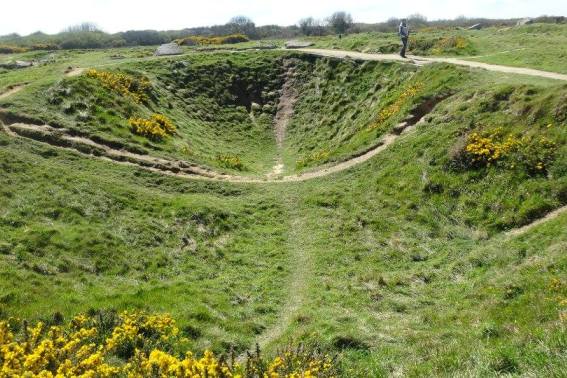 Photo by: Kristine Dworkin
Photo by: Kristine Dworkin
This one-time German artillery was the site of aerial and naval bombardment so intense that the land around it is still filled with craters today. Members of the 2nd Ranger Battalion eventually seized and disabled it after scaling the 100-foot cliffs while under enemy fire. A guide told us that the group’s climbing time, on average, was two minutes. My daughter’s jaw dropped as she peered over the cliff to the waters down below. “Woah!” she exclaimed. “It took longer than that for us to walk this flat path!”
A collection of bunkers remains, including a large casemate as well as ammunition and anti-aircraft bunkers. We squeezed through narrow hallways, imagining what it must have been like to sit in the dank structures while their world shook and exploded around the occupants. Standing in the observation bunker and machine gun position was another striking experience. It was from this point that Germans monitoring the approaches to Omaha and Utah Beaches fired on the advancing Rangers from narrow slits in the thick walls. “It really is amazing that enough of them made it up here!” my daughter remarked peering through the slit. That is the hallmark of making history tangible. She has read books about D-Day, seen documentaries, and studied it in school. Being there is what put it all in perspective.
Bayeux
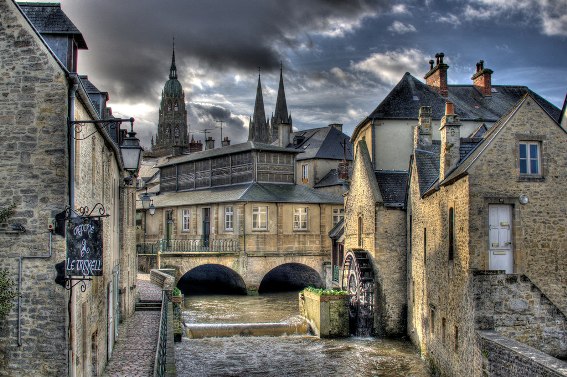 Photo by: Flickr/Gaëtan Zarforoushan
Photo by: Flickr/Gaëtan Zarforoushan
The first city liberated after the Battle of Normandy, Bayeux’s beautiful Old Town and Norman Gothic cathedral miraculously came through the war unscathed. The town was spared from bombing because it had no factories or military bases, so it served no strategic purpose. Still things happen in war that defy reason. Walk the town streets and look up at the spires of Bayeux Cathedral, which was dedicated in 1077. You, too, will be amazed it’s all still here especially when you consider that land permanently cratered by aerial bombardment is only a few miles away.
La Cambe German Military Cemetery
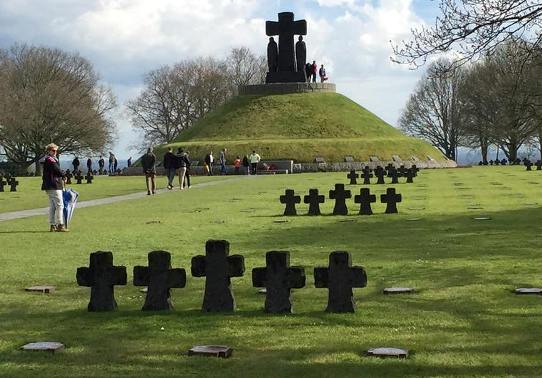 Photo by: Kristine Dworkin
Photo by: Kristine Dworkin
When I first suggested we visit the German Military Cemetery, my kids were perplexed, frankly so were my parents who were born during World War II. They wondered why we’d go see where the “bad guys” were buried. While it’s easy to see such situations in a black-and-white manner, I thought it was important for my kids to know that even those “bad guys” were given a dignified burial. More than 21,000 soldiers are interned at La Cambe, making it the largest of Normandy’s six military cemeteries. About 80 percent of those in this cemetery were less than 20 years old when they died. With its simple grave markers, few crosses, an angular design and layout, it’s a stark contrast to the American Military Cemetery. It was not only worth seeing, it was worth the conversation that sprung up while we were there. While looking at so much youth that met an early demise we couldn’t help but wonder about the road that brought them there. Had they been misled? Did they feel they had a choice? Were some of these people victims of one of history’s most lethal cliques? There, amid the graves of German soldiers who had been dead for more than seven decades, history gave up two societal principles for my children to keep in mind, mob mentality and the risks of falling in with the wrong crowd.
Educational Resources for Learning about D-Day
Trekaroo’s Road School Series
Check out Trekaroo’s Road School Series for tips and resources for parents seeking to make the most of education through travel. We cover topics including Science, Nature & Technology, Environmental Studies & Social Impact, Literature, Art, & Music, and History & Culture.
Featured photo by: Shutterstock
- 10 Fun Things to do in San Pedro, Belize - February 20, 2024
- Christmas in Hawaii- Hawaii Christmas Events for 2023 - November 9, 2023
- Christmas in San Francisco- The Best San Francisco Christmas Events for 2023 - November 3, 2023

